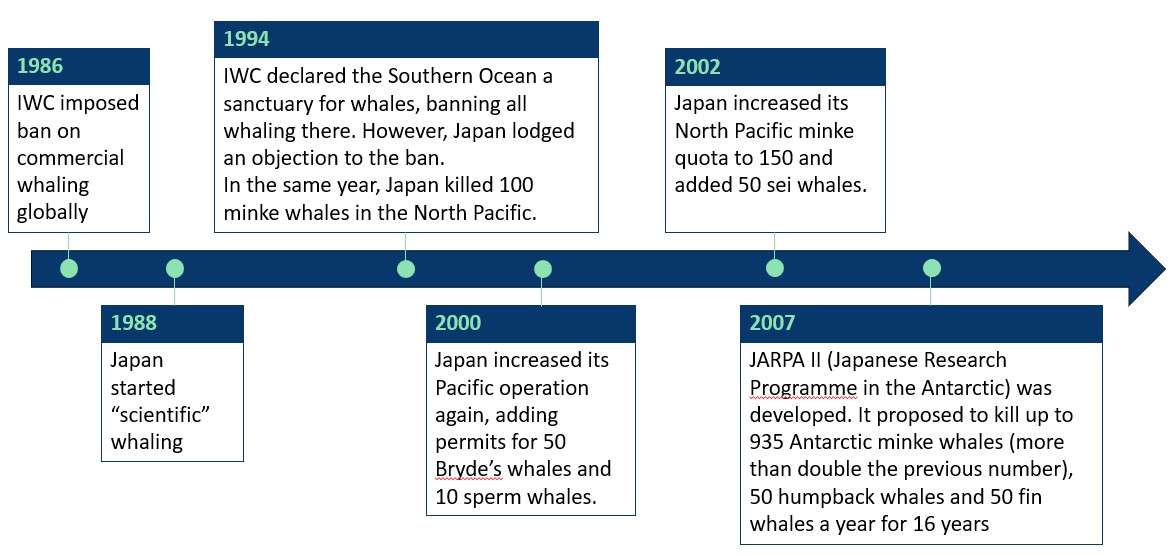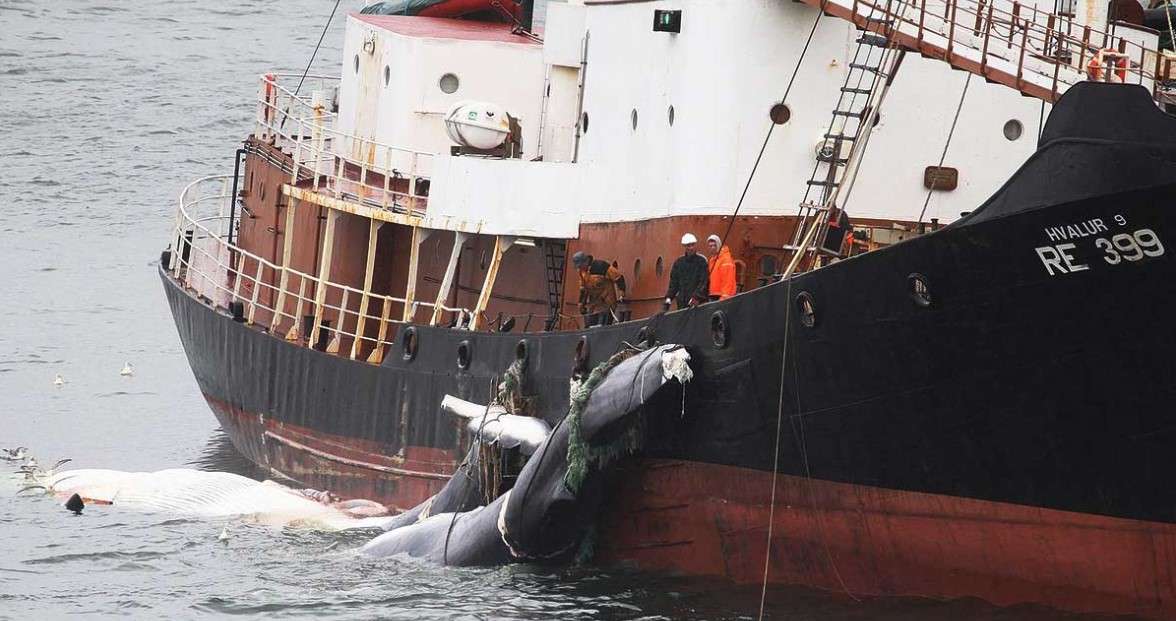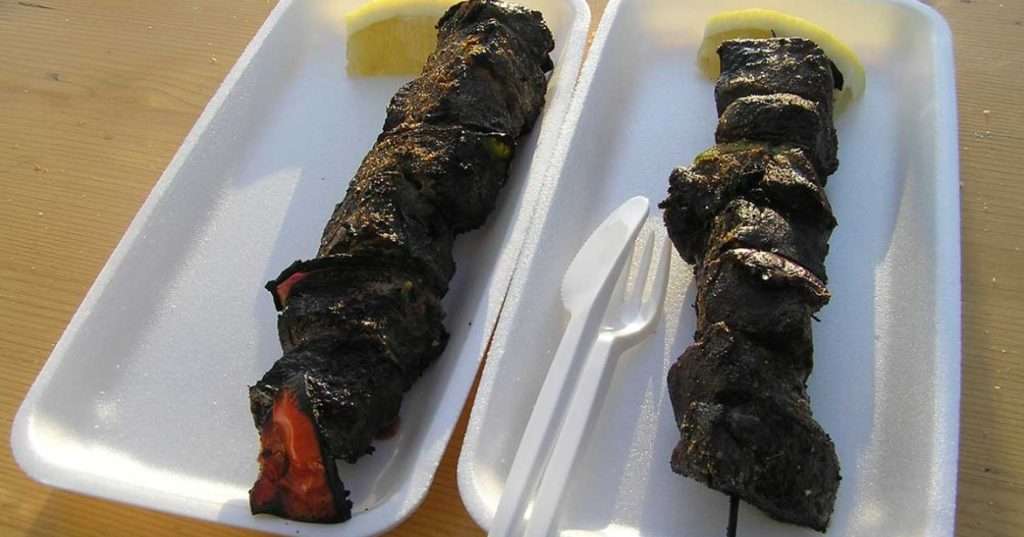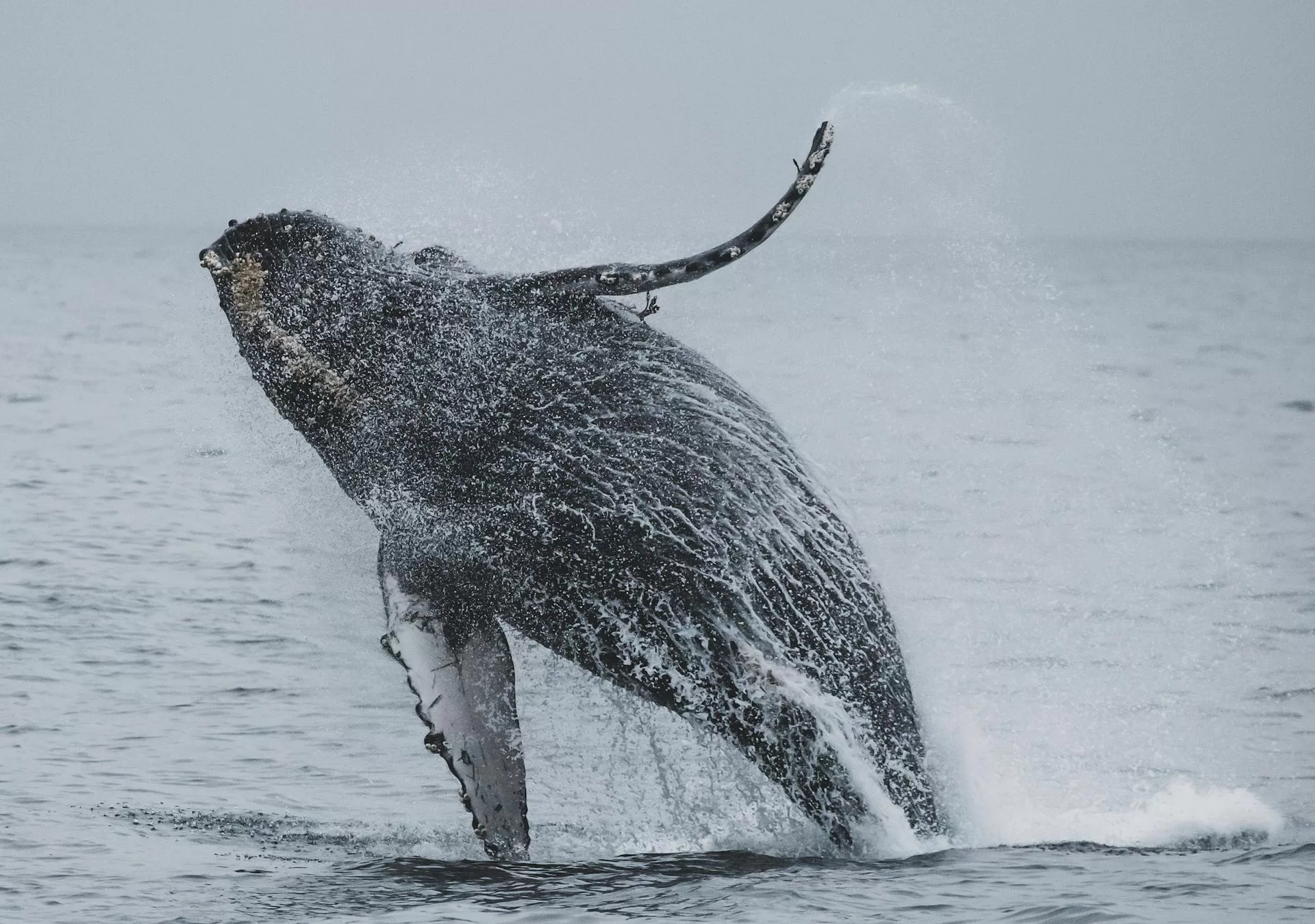The History of Whaling and whaling laws
An estimated 2.9 million whales were killed during the twentieth century, obliterating global whale populations (EIA, 2018). Japan is one of the largest contributors to this. They have fiercely protected their right to whaling, despite global outcry (Catalinac and Chan, 2005). The International Whaling Commission (IWC) has been instrumental in controlling and banning commercial whaling since 1986 through its whaling laws. Unfortunately, a loophole gave special permits for scientific research to be conducted on whales, so Japan, Norway and Iceland have killed nearly 40,000 large (fin, minke and sei) whales since that year (WDC, 2023). Additionally, over 100,000 dolphins, small whales, and porpoises are also killed in various countries each year, making the mitigation of whaling laws essential for a sustainable, just and thrivable Earth.
Commercial Whaling Now
Despite the global ban on commercial whaling in 1986 by IWC, Japan has had exemptions granted for “scientific” expeditions. Conversely, the government even subsidises its whaling industry. Despite the cause being for scientific research, we are selling whale meat commercially (Fang, 2019). Iceland has refused to recognise the ban and continues to kill fin and minke whales. Minke whales are served in restaurants to tourists and fin whales are being exported to Japan (WDC, 2023). Norway hunts whales under an objection to the global ban and the government promotes the consumption of whale meat within the country, and to tourists.
Demand for whale meat is declining globally. Additionally, whalers in Japan, Iceland and Norway still slaughter fin and minke whales, determined to keep the whaling culture alive. As the demand for whale meat declines, whalers are inventing diverse uses for whale products in a desperate measure to get rid of the whale meat. This includes dog treats, iron supplements and even a so-called flavouring for beer (WDC, 2023).
Whaling in japan
There is a misconception that Japanese people have enjoyed eating whale meat for thousands of years. However, eating whale meat only became popular after WWII due to a shortage of meat supply. Post WWII, whale meat made up 46% of total meat consumption in Japan. Recently, that number has reduced to just two per cent, and most Japanese people are unaware that Japan conducts commercial whaling (The World, 2019).
The moratorium imposed by IWC came into effect in 1986. However, Japan immediately objected to the ban. After two years of political pressure, they were forced to remove the objection, and in 1988 they were bound by the ban on commercial whaling. However, the ban did not stop Japan from commercial whaling. They continued killing whales and selling the meat under the disguise of “scientific” whaling (WDC, 2023).

Source: WDC
The Bottom Line
The issue goes beyond the illusion of scientific whaling. The research permits for scientific whaling are issued to the Institute of Cetacean Research (ICR), which in turn, contracts a single company to provide the vessels and the crew. Furthermore, this contracted company was also given the whale meat after ICR conducted the research, to sell at a fixed price. The purpose of this is to use the funds to cover the cost of the research (ICR, 2011). As demand has been falling over recent years, the ICR has been forced to reduce prices. The prices fetched are not sufficient to cover the cost of their research.
This has led to the industry being heavily reliant on government subsidies. In 2021, the Japanese government provided over $35 million in subsidies to the whaling industry (The Asahi Shimbun, 2021). Evidently, it is clear that commercial and scientific whaling in Japan is not viable and we should ban it immediately.
Whaling In Iceland

Source: Responsible Travel
From 2006 to 2022, a thousand fin whales alone have been slaughtered in Iceland (WDC, 2023). Fin whales are the second largest creature on earth, considered an endangered animal. Contrary to popular belief, locals in Iceland rarely consume whale meat. A survey carried out in 2017 by Gallup for the International Fund for Animal Welfare indicated that only one per cent of Icelanders eat whale meat regularly, while 81% never eat whale meat (EIA, 2018). Most of the minke whale catch is promoted to tourists at restaurants and the fin whale catch is almost entirely exported to Japan (WDC, 2023).

Source: Responsible Travel
However, global protest against the killing of whales has seen demand for whale meat decline. Additionally, whale watching in Iceland is becoming increasingly popular. Around one in five of the two million tourists who visited Iceland in 2017 took a whale watch trip (WDC, 2023). This tourist arrival number is staggering considering is it more than six times the population of Iceland. Most of the support for whaling in Iceland comes from the older generations and the coastal populations. They believe fishing is a part of the country’s rich heritage as a seafaring nation (Antonova and Rieser, 2019).
In 2020, news emerged that Iceland’s fin whaling company will not be killing any more fin whales. At the same time, Iceland’s minke whaling company announced that it was no longer feasible to continue minke whaling and would be ceasing hunting for good. There has been some fin whale hunting in 2022. However, the last quota allocated by the Iceland government for fin and minke whale killings end in 2023. There is hope that all killings will stop completely.
Whaling in Norway
Norway has objected to the IWC ban since 1986 and still continues its commercial whaling operation. The Norwegian government heavily subsidises the whaling industry. They have an ambition to increase domestic demand as well as exports to Japan and other countries. The government is promoting whale meat to school children and young people, and offering whale burgers at festivals (Orca, 2021). Whale meat is being served in restaurants to attract tourists and served on cruise ships and promoted as traditional local food.
Worldwide activists have shown immense displeasure and scientists have expressed grave concern with Norway’s whaling practice. Norwegian whalers target pregnant whales as they are slower and easy to catch (Earth.Org, 2022). Horrifying statistics show that between 2000 and 2015, 68% of the minkes killed by Norwegian whalers were female and over 40% of these were pregnant (Wildlife & Welfare, 2023). This has seriously threatened the minke whale population and genetic diversity.
Whaling Laws for ‘Sustainable’ Whale Hunting
Apart from Commercial Whaling and Special Permit (Scientific) Whaling, there is a third type of whaling; Aboriginal Subsistence Whaling (ASW). Aboriginal subsistence whaling is supporting the needs of indigenous communities and people consider it a sustainable method of whale hunting. The IWC recognises that whale products play an important role in the cultural life and nutrition of certain indigenous people. ASW does not have the same harmful effects of commercial whaling and it does not seek profit. Therefore, it is not subject to IWC’s whaling laws.
IWC aims to maintain whale populations at healthy levels while allowing indigenous people to hunt whales at levels that are appropriate to cultural and nutritional requirements in the long term (IWC, 2023). As the UN Conference on Environment and Development has implied, if wild animals or plants are harvested, then such harvesting should be limited so
that it is sustainable (Barnett, 1993
As an example, scientists are working on conserving the bowhead whale population in Alaskan waters to ensure that Alaskan natives can hunt bowheads on a subsistence basis. To ensure this is sustainable, scientists have assigned a harvest quota. This is being undertaken to maintain population growth, allowing natives to meet their requirements and maintain the culture and life they are used to (Oceanwide Expeditions, 2023).
Is ‘Sustainable’ Whaling Really Sustainable?
There have been arguments by the Japanese government that the commercial whaling they have been carrying out is sustainable. Their argument is based on the fact that there are abundant species of whales, such as the minke whale. They further argue that, currently, there is sufficient data and technologies to calculate catch quotas that are in line with sustainable hunting (SPF, 2015). However, various research exists that points to the contrary, and debates abound as to whether we – as a society – are being proper stewards of marine life, as controvercially reflected in the media through programs such as Seaspiracy.
Additionally, scientists argue that there is still not enough research done on whale lives, migration patterns and feeding behaviour (Kaplan, 2018). Therefore, catch quotas must take this uncertainty into account. As a result of the commercial whaling that is taking place, whale populations are under threat. According to WWF, six out of the 13 great whale species are classified as endangered or vulnerable. One of these six species includes the fin whale which has been the target of whale hunting to this date. There are fin whale catch quotas given by governments until the end of 2023 (WDC, 2023). Furthermore, dolphins and smaller whales have suffered from by-catch.
A case study of sustainable whaling in the North Atlantic
There are, evidently, some areas in the world where sustainable/subsistence whaling is unfortunately occurring. Each year, during the summer months, several hundred pilot whales are killed for their meat and blubber by inhabitants of the Faroe Islands, a rugged coastline in the far North Atlantic. The hunts happen sparingly – approximately five times throughout the season. The practice is embedded in the Faroese culture, providing much-needed resources (meat and blubber) in the unforgiving environment (Heisenberg, 2022).
Despite the global outcry against this whaling practice, the Faroese argue that scientific research has shown that the pilot whale population in the NE Atlantic is abundant (Whaling.fo, 2017). According to Whales and Whaling in the Faroe Islands, the eastern North Atlantic is home to some 380,000 animals, with 100,000 in the area around the Faroe Islands. The Faroese catch an average of 600 of them annually.
Conversely, scientists and conservationists maintain the stance that not enough research has been carried out on these species. Not enough information is available on a number that is sustainable.

Source: Pexels
moving forward
It is undeniable that whales play a crucial role in our marine ecosystem. They are at the heart of the food chain that supports ocean life, helping fish and other species to thrive and reproduce. While there is conservation taking place for these magnificent creatures, whale numbers across the globe are depleting. Species like the North Atlantic right whale have seen their numbers rapidly decline over the recent few years. As of 2022, fewer than 350 North Atlantic right whales remain (NOAA Fisheries, 2023). Scientists fear the extinction of the North Atlantic right whale as their feeding behaviour and travelling patterns have drastically changed (Kaplan, 2018).
In this light, we need to stop the commercial whaling taking place in the current age. Whaling laws need tightening and catch quotas for scientific whaling reduced. Sustainable schemes need to be put in place. Accordingly, humans face challenges to whaling law mitigation, such as agreement on sustainable quotas and we allocate these quotas (Costello, 2012). It is believed that IWC is up to the task.
why Is it essential that we focus on whaling laws?
The IWC governs commercial whaling and has been setting whaling laws and catch limits since 1946. Marine life activists have been protesting that the ban is not strict enough and the catch quotas are too high. The decline in demand for whale meat proves that whale hunting at these numbers is unprofitable and results in excess meat going to waste. Catch quotas need to represent sustainable numbers.
Secondly, we need to establish whaling laws that ensure populations don’t deplete, as indigenous people depend on it. Certain groups of people who live in remote locations depend on whale meat and blubber for survival. They do not possess the skills to hunt other animals and the resources they get from whales are not easily substituted. This form of subsistence whale hunting is sustainable as it’s done in small numbers.
Another reason whaling laws are essential to maintain populations of whales is an economic benefit. Communities can draw tourism revenue from whale watching, which is becoming increasingly popular, especially in the North Atlantic and Southern Oceans.
achieving the United Nations Sustainable Development Goals (SDGs) and how they link to whaling laws
Whales have a right to life. Science validates that whales and dolphins are capable of experiencing complex emotions, demonstrating complex behaviours and social structures (Simmonds, 2006). Their sentient nature makes whaling all the more cruel and inhumane. WDC believes that due to their intelligent nature, merely protecting their fundamental right to life is insufficient.
“…beyond a basic ‘right to life, liberty and wellbeing’, (whales) also have the right to freedom of movement and residence within their natural environment; the protection of their natural environment; and (should) not to be subjected to the disruption of their cultures.”
WDC, 2023
This aligns with the UN’s Sustainable Development Goal (SDG) 14: Life Below Water. This goal aims to conserve marine life and sustainably make use of the ocean’s resources for sustainable development. It further establishes the dependence of all living things on the health of our oceans and seas. We must ensure whaling laws align with the UN SDGs in order to protect marine life, its rights, and the thrivability of all living things.
A Thrivable Framework
At THRIVE, we invest interest in educating and advocating for issues fundamental to the sustainable development of our communities. THRIVE’s mission is the long-term well-being and the thrivability of all humanity. The slaughter of whales for commercial purposes has proven to be unsustainable to continue. The further promotion of whale meat to children and adults alike is against the transition towards sustainable living. We need to reinforce catch quotas with scientific research and align whaling laws, in turn, with such numbers. THRIVE Framework is based on the belief that science-based targets provide for a more accurate allocation of resources, matched to scale.
The argument against disrupting ethnic cultures doesn’t add up. We can allow whaling in controlled quantities, ensuring that the lives of communities (dependent on whaling) live comfortably, allowing indigenous societies to thrive. Listen to our podcasts and take part in our webinars to learn more about life below water and how we can protect our marine resources, ensuring sustainable development and a thrivable future for all. Sign up for our newsletter to receive regular updates!
The THRIVE Project collaborated with Sunil Murlidhar Shastri, a consultant, expert and speaker in ocean and environmental governance. He stated that 96.5% of all water on Earth is in the ocean. Therefore, losing it would be catastrophic, as the ocean generates 50-80% of oxygen. Sunil gave us his take on the top 10 solutions to fight climate change.
Connections between Whaling Laws and THRIVE’s Seafood Stewardship Index (SSI)
Increasing sustainability action in the fisheries sector is a global focus due to the unsustainable commercial fishing practices, such as whaling, that still take place. Evaluation of the sustainability performance of the seafood industry is essential to ensure alignment with UN Sustainable Development Goals (SDGs). In an attempt to contribute to SDG 13, (Life Below Water), THRIVE has built a Seafood Stewardship Index (SSI) to benchmark the sustainability performance of influential seafood companies.
The investigation by THRIVE adopted the THRIVE Framework and used the THRIVE Platform to analyse the sustainability performance of 30 companies operating in the seafood industry, with a broad multi-level entity approach (Fedeli & Glinik, 2021). The pilot study showed that the maximum Sustainability Performance Index (SPI) score of these companies was 2.698 out of 5. This means that the seafood industry has a lot of work to do to create sustainable solutions for us to thrive.























